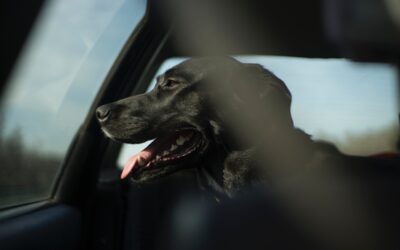To prepare deer hooves for dogs, clean them thoroughly and bake at 250°F for 2-3 hours to remove moisture. Always monitor your pet while they chew to ensure safety.
Preparing deer hooves for canine companions can be a useful way to offer a natural chew toy that is high in protein and can support dental health. With pet owners striving for eco-friendly and raw options for their pets, deer hooves stand out as a biodegradable alternative to synthetic chew toys.
Ensuring these hooves are clean and properly dried is crucial to prevent bacterial growth and make them safe for your dog to enjoy. Remember, these chews are best suited for dogs with strong teeth and should be introduced gradually to avoid any digestive upset. It’s essential to supervise your dog during chew time to prevent accidental ingestion of large pieces that might cause choking or blockages.
Safety First: Preparing Deer Hooves For Dogs
Dogs can chew on deer hooves if they are safe. To find quality hooves, check for cracks and freshness. Discard any that are brittle or old. Raw hooves might carry germs. It’s important to understand the risks of raw hooves.
Before giving to your pet, hooves must be properly cleaned and sterilized. Use hot water and soap to clean them. Soak the hooves in a diluted bleach solution for disinfection. Rinse them well after. Ensure they’re completely dry before offering them to your dog.
Nutritional Benefits Of Deer Hooves
Deer hooves offer great nutritional benefits for dogs. These treats are packed with vital nutrients that assist in keeping your dog’s teeth clean. Regular chewing on deer hooves can help reduce tartar and plaque buildup, promoting overall dental health. Not only do they provide long-lasting chew time, but they also support healthier joints in canines. This is due to the natural collagen present in the hooves.
The protein analysis of deer hooves shows they are a rich, lean source of protein. Essential for muscle development, these chews are both a rewarding and beneficial snack for your furry friend. By incorporating deer hooves into your pet’s routine, you ensure a blend of fun and health.
Trimming And Sizing For Your Dog
It’s essential to consider your dog’s size and chew habits before preparing deer hooves. Small dogs or gentle chewers need smaller hooves, while big dogs with strong jaws require larger pieces. Choosing the right size prevents choking hazards and ensures your pet’s safety.
Proper tools are a must-have for cutting and shaping hooves. Use a sharp knife or a saw to trim hooves to the desired size. Always keep your tools clean to avoid contamination.
Splintering can harm your dog; thus, smoothing edges is crucial. After cutting, use a file or sandpaper to round out sharp edges. This step helps protect your dog from injuries.
Drying And Storage For Longevity
To ensure effective drying, use a method that circulates air evenly around the deer hooves. This could be a specialized pet treat dehydrator or a homemade setup with adequate ventilation. Remember to cut the hooves to the appropriate size for your dog before drying. Consistent size helps with even drying.
To maintain freshness, keep the hooves in a cool, dry place. Direct sunlight or moisture can damage them. A pantry or cupboard away from direct heat sources is ideal. Use a container with a tight seal to protect from pests and contaminants.
For storing hooves, consider using airtight containers or vacuum-sealed bags. This prevents spoilage and keeps the odor contained. It’s also wise to check the hooves periodically for any signs of spoilage and discard any that don’t look, smell, or feel right.
Introducing Deer Hooves To Your Pet
Preparing deer hooves for your dog is a unique way to offer a treat. Always ensure they are clean and trimmed before offering. It’s essential to select the right-sized deer hoof for your pet. This prevents choking hazards and matches their chewing capability.
First-time feeding tips are crucial for safety and enjoyment. Introduce deer hooves under supervision. This lets you watch their initial interaction. Giving them in short sessions helps determine their interest and digestion response.
| Monitoring Aspect | Action to Take |
|---|---|
| Chewing Behavior | Ensure they chew carefully. |
| Gastric Response | Look out for any upset stomach. |
Set a consistent chew session schedule to establish a routine. Limit sessions to 10-15 minutes for starters. Gradually increase depending on your dog’s reaction and interest. Always keep a close watch during these chewing sessions.
Common Questions And Misconceptions
Dog owners often ask about chew options for their pets. Deer hooves are a choice you might consider. Compared to synthetic chews or rawhides, deer hooves offer a natural alternative. Dogs find them inviting and long-lasting.
Concerns about choking on deer hooves exist among pet owners. This is an important consideration. Always supervise your dog while chewing. Choose the right size of hoof for your dog to reduce risks.
The question of whether deer hooves are digestible arises frequently. They are partially digestible. Chewing them can help reduce plaque and tartar build-up. But dogs should not consume large pieces. Consult your vet for advice tailored to your dog’s specific health needs.
Frequently Asked Questions For How To Prepare Deer Hooves For Dogs
Are Deer Hooves Safe For Dog Chews?
Deer hooves can be safe for dogs when properly cleaned and prepared. They should be free from sharp edges and contaminants. Always supervise your dog to prevent choking or splintering hazards.
How To Clean Deer Hooves For Dogs?
Begin by soaking the hooves in soapy water to loosen dirt. Scrub thoroughly, rinse well, then boil to sterilize. Dry completely before offering to your dog to minimize the risk of bacteria.
What Are The Benefits Of Deer Hooves For Dogs?
Deer hooves provide mental stimulation and can help maintain dental health. They are a natural source of collagen, strengthening dog’s bones, joints, and connective tissues.
How Long Should Dogs Chew On Deer Hooves?
Limit chew sessions to 15-20 minutes to prevent overexertion of the jaw and to reduce the risk of wear on teeth. Regularly inspect the hoof for signs of damage.
Conclusion
Preparing deer hooves for your canine companion ensures a safe and enjoyable treat. Always remember to supervise your pet during chew time. Properly cleaning and drying the hooves prevents bacterial growth. Embrace this natural, enriching snack to keep your dog’s teeth healthy and their mind engaged.
Happy treating!


